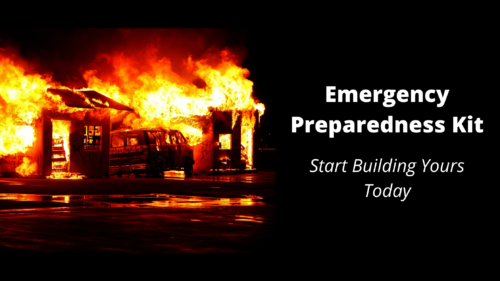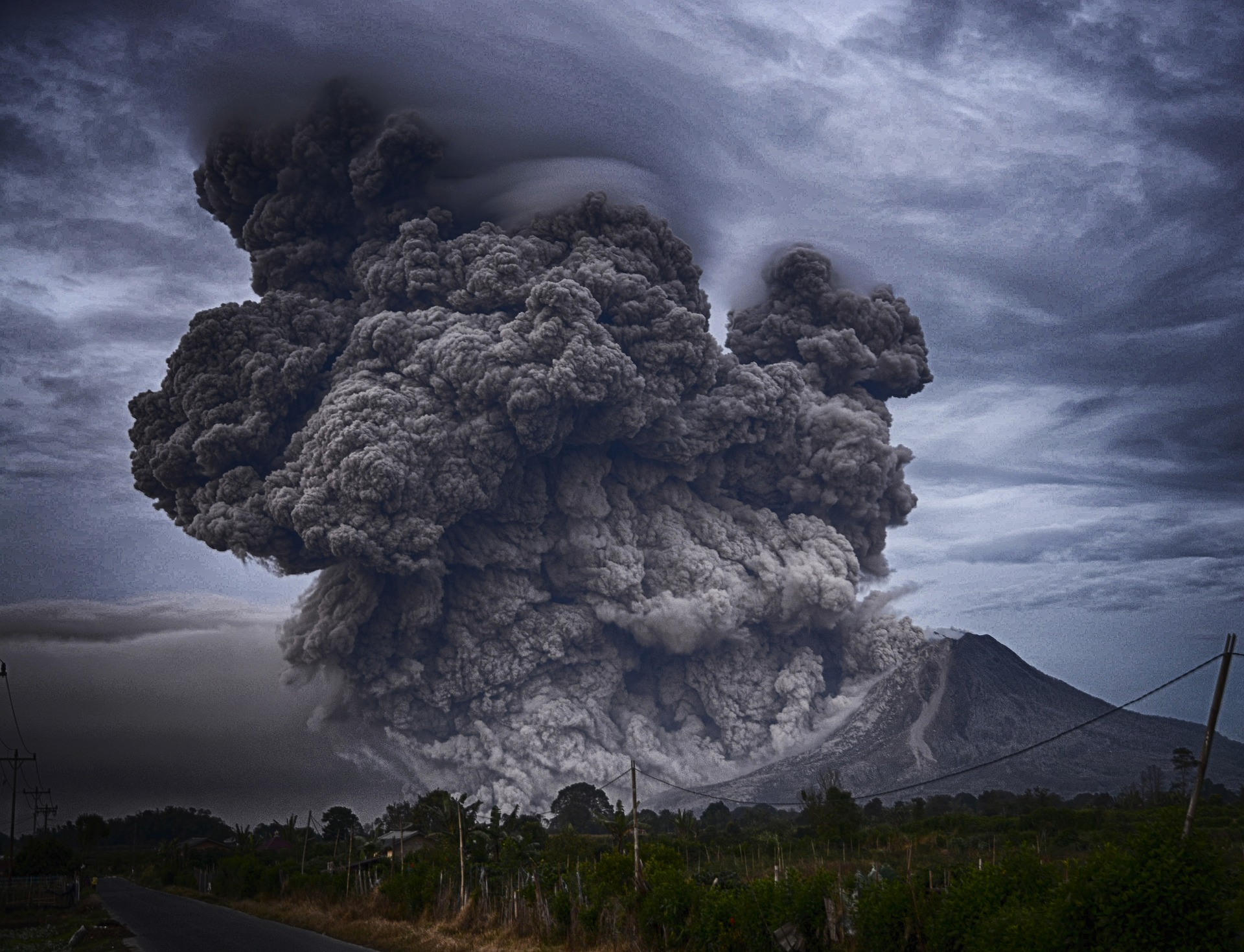We may earn money or products from the companies mentioned in this post, but this does NOT cost you anything extra! Check out my full disclosure for more info.
It’s a simple question, but one that needs to be asked. Are you prepared for an emergency?
If you do an online search, you will find a ton of information on the perfect emergency preparedness kit. My direction is to give you some simple ideas on where to start. It’s up to you to do the work and make a kit that is suited for you.
Let’s get started building your kit!
Making A Go-Bag
To start, I’m going to share with you some terminology. Don’t worry, and it’s easy. You will notice that I generally use the term emergency kit, but other terms mean the same thing as a survival kit, go-bag, get-home bag, and even the 72-hour bag.
The critical thing to understand is that they all pretty much represent the same thing. It’s essentially a bag you use when you get up and go. This bag or kit can contain things to get you to your desired destination.
It’s important to know what you are planning for. There are some questions you should ask yourself:
- How many people are you packing for?
- What is your cost, how much do you want to spend?
- Is weight an issue?
- Do you want one kit for everything, or do you want to make a few kits depending on what you are doing?
If you do not want to take the time to make your own kit, you can always purchase a premade kit. Some on the market are expensive but contain some quality gear, while others you can pick up at your local Walmart.
I used a large duffel bag When I started making a kit for myself. I’m sad to report that I loaded this bag up!
It was not easy to carry and a pain to get it in my car. And there was no way I would want to carry it more than a few hundred feet.
This got me thinking about the weight as well as ease of use.
If it’s just you, using a backpack might be perfect. I will say a friend of mine has a larger family, and they started using clear plastic containers with secure locking lids.
This works great for them (they also have a large SUV to store everything). Just remember to know where everything is and practice loading up.

Now it’s time for the fun stuff.
What are some ideas to include in your emergency kit?
Here is a list to get you started. Feel free to add to this list, and if I left anything out, let me know in the comments below!
- Water (a good rule of thumb is one gallon per person per day)
- Water purification (tablets, filters, and purifiers)
- Food (canned food, dried food, granola bars, coffee, tea)
- Can opener
- Cell phone and charger
- Extra batteries (or a battery powerhouse)
- Extra fuel
- Fire extinguisher
- Flashlight
- First aid kit
- Mask (for dust and COVID)
- Duct tape
- Maps of your area
- Battery-powered or hand-crank radio
- Personal hygiene items
- Sleeping bags or blankets
- Medications (that you need, family needs, or for pets)
- Moist towelettes
- Multi-purpose tool
- Whistle (helps to signal for help instead of yelling)
Maintaining Your Kit
Once you have decided on the kit you want to build, there are a few things to keep in mind. It’s important to remember to cycle through your items, such as food, to make sure nothing expires.
There is also the fun part of finding better or improved versions of what you already have. But we can go over that once you have assembled your emergency kit.
This might go without saying, but I feel it needs to be addressed.
No matter what kit you decide to have, I think the main thing to remember is to have a plan. You want to ensure your family members know the plan and that you practice it.
One thing I recently decided to do, after being evacuated for about three weeks a few years ago, was keep my important information on a USB flash drive.
I also do my best to update it every few months. This way, worst case, I know I will not lose everything. Another option is to back up your information to cloud storage every few days.
What information do I include? I’m glad you asked. Here is a quick list of digital scans you should have:
- Your current driver’s license
- Pink slip to your vehicle
- Information for your home, if you own (the deed, for example)
- Your will
- Proof of insurance (home, vehicle, health)
- All medical records (kid’s immunization records)
- Current passport
- Birth certificate
- Excel list of personal contacts (phone numbers and addresses)
- Pet information (vaccinations and medical history)
- Pictures of your possessions
I would also suggest you take photos of all your items. At the minimum, stop reading and take pictures of all the rooms in your home.
I highly recommend you do this as it will help you remember what you have if you ever need to make a list for an insurance claim.
Honestly, stop reading and do this now. You might thank me later.
This is just an example of documents and photos that you should have. This list can defiantly be expanded on.
Again, I suggest you have this backed up to a cloud service (if you have a Google account, you already have access to Drive) and a USB backup.
Storing Your Kit
The next question you might have is, where do you keep your emergency kit? It depends on what you have in it.
If you are making a dedicated emergency kit storing it in a cool, dry place is best. This is mainly due to the items you are keeping in it (water filter, food, batteries, etc.).
The most important thing you must remember is that you need it to be easily accessible.
Remember, this is the bag you will grab when you have to leave your home in under 60 seconds, and you only have time to run out the door.
I keep mine inside my closet because it’s next to my door when I’m running out. I also keep all the essentials I can survive for at least of 72-hours. I will again say that I have smaller kits (hiking and my vehicle, for example) in other areas too.
I do this because I want to be able to survive in different scenarios.
If I’m home, more than likely, I’m going to grab my bag (from my closet) and jump in my car. This way, I can survive for almost a week. That is just me. You might have a different scenario that is better suited for you.
Just keep your bag where you know where it is. You want to be able to grab it in the dark if you cannot see, and don’t forget that it is easily accessible.
Are You Prepared?
It’s essential always to be ready for what life throws at you. There might be times that you know you will need to evacuate, such as a storm or fire, but there are other times you WILL NOT see until it’s time to go.
I shared with you some scenarios and ideas on what to keep in your kit. I hope that I got you thinking about creating your kit or, better yet, updating the one you already have.
My other goal is to help you to get prepared. I know this will help keep you calm during a very stressful time. And that is the difference between survivors and people that curl up in the fetal position and freeze.
Please share with me any comments you might have.
If I left anything out that you find essential, let me know that, too, in the comments below! I always enjoy hearing what others are doing to prepare.


This was a great blog!
Because of your other blogs, I started organizing a Go Bag. I’m not quite done, but was feeling pretty good about what I had in there. However, now that I read this blog, you suggested several things that I did not even think about. Thank you for that! I hope I never need it, but if I do, this will make an evacuation situation so much better.
Keep Blogging!
Thanks! And glad you got one started. That is the best step. It’s funny because now you will never stop, keep thinking of ways to make it better. Then let me know if I missed anything.
Have fun with the process!
You never know when an emergency will arise, I’m glad my random web surfing has brought me to this article. I can see that it has provided a lot of possibilities for me to come out ahead in the case of an emergency, I appreciate this a lot and I hope that you haven’t learned all this from actually experiencing a big emergency like this one. I appreciate this a lot!
Thanks for your comment, and most of it has been trial and error. But, being repaired is extremely important, especially in today’s world.
Wow , what a brilliant idea. I just never thought of this. I am glad I came across your article . After reading it I agree that every household must have an emergency bag. It will be a challenge for me to get one ready because in total we are 5. I guess that is going to be a very big bag , but I think that it will be better to pack little for each person than to have nothing packed at all. Thank you .
Thanks for reading and leaving a comment!
Having something ready is better than nothing, but I would suggest having a family plan first. That way, everyone will know what they are responsible for. I have friends that have a 6-year old that knows what she is supposed to do if there is a fire. Pretty cool.
I already have a survival kit on standby. But I am happy to have read your article. After reading your article, I was missing a few stuff which I didn’t even considered to include in my stash. I will have to reorganize my survival kit. One other thing that I have not thought about doing is the digital scan of all my important documents. I will have to do that too. Thanks for a helpful article.
That is awesome to know! I’m glad you already have your kit ready to go and stocked that I could help you add a few things. I think the digital scans are super important. There are some smaller travel drives or USB drives that work great for this. Get one that has metal housing as they tend to last longer.